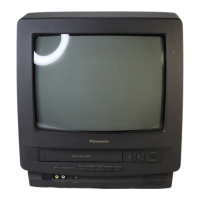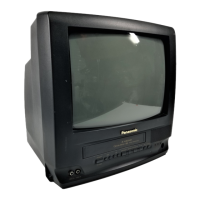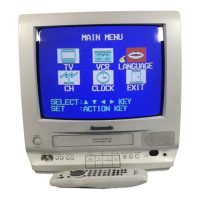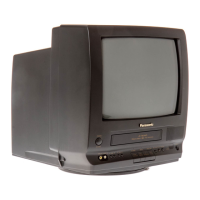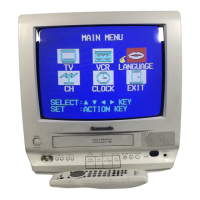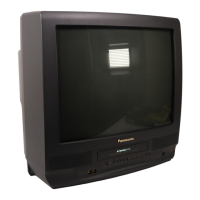1-14
Tweezers
Solder
Soldering Iron
Soldering Iron
Presolder
Tweezers
Chip
Soldering Iron
Cylinder Rotation in STOP mode
The cylinder will continue to rotate for approximately 5 minutes
after the STOP button is pressed in Play mode etc. Eject the
tape in order to stop the cylinder.
Black Screws on the Chassis
Black Screws are used on the Mechanism Chassis to identify
screws that require adjustment.
Variable Voltage Isolation Transformer
An Isolation Transformer should always be used during the
servicing of Combination VCR whose chassis is not isolated
from the AC power line. Use a transformer of adequate power
rating as this protects the technician from accidents resulting in
personal injury from electrical shocks. It will also protect Com-
bination VCR from being damaged by accidental shorting that
may occur during servicing.
Also, when troubleshooting the above type of Power Supply
Circuit, a variable isolation transformer is required in order to
increase the input voltage slowly.
Special Note
All integrated circuits and many other semiconductor devices
are electrostatically sensitive and therefore require the special
handling techniques described under the
"ELECTROSTATICALLY SENSITIVE (ES) DEVICES" section
of this service manual.
Replacement Procedure for Leadless (Chip)
Components
The following procedures are recommended for the replacement
of the leadless components used in this unit.
1. Preparation for replacement
a. Soldering Iron
Use a pencil-type soldering iron that uses less than 30
watts.
b. Solder
Eutectic Solder (Tin 63%, Lead 37%) is recommended.
c. Soldering time
Do not apply heat for more than 4 seconds.
d. Preheating
Leadless capacitor must be preheated before
installation. – (266°F ~ 302°F)
(130°C ~150°C) for about two minutes.
Note:
a. Leadless components must not be reused after
removal.
b. Excessive mechanical stress and rubbing of the
component electrode must be avoided.
2. Removing the leadless component
Grasp the leadless component body with tweezers and
alternately apply heat to both electrodes. When the solder
on both electrodes is melted, remove the leadless compo-
nent with a twisting motion.
Note:
a. Do not attempt to lift the component off the board until
the component is completely disconnected from the
board by a twisting action.
b. Be careful not to break the copper foil on the printed
circuit board.
Fig. 7-1
3. Installing the leadless component
a. Presolder the contact points on the circuit board.
Fig. 7-2
b. Press the part downward with tweezers and solder
both electrodes as shown below.
Fig. 7-3
Note:
Do not glue the replacement leadless component to the
circuit board.

